#Vera Gedroitz
Text
Vera Ignatievna Gedroits - the openly lesbian, first woman professor of surgery in Russia, who worked alongside the Romanovs

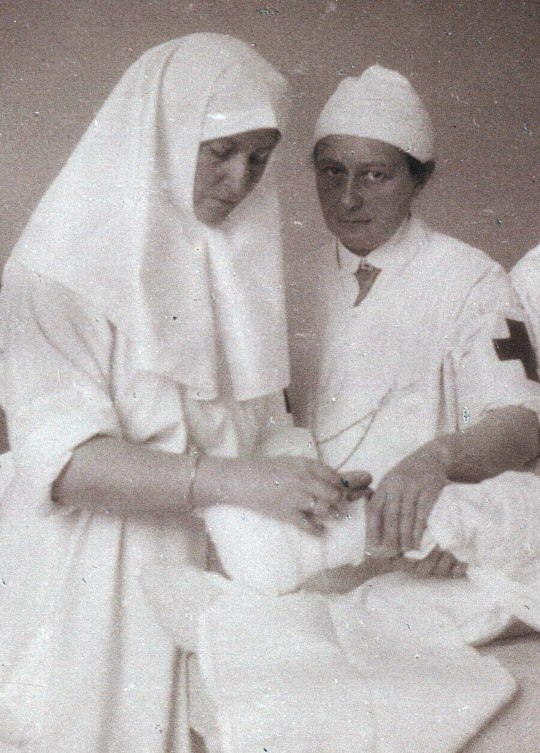
Princess Vera Ignatievna Gedroits was a doctor, surgeon, poet, and pioneer of medicine. Vera worked alongside Tsarina Alexandra and Grand Duchesses Olga and Tatiana Nikolaevna, working with the Red Cross to treat injured soldiers during the First World War.
** content warning for mention of suicide **
Born as a Princess of royal Lithuanian descent in 1870 in Kyiv, Vera is thought to have developed an interest in medicine following the passing of her little brother Sergei during childhood. Vera later wrote under the pen name ‘Sergei Gedroits’ in honour of him.
In 1892, Vera was arrested for participating in the Populist movement. Freed and undeterred, Vera was adamant to continue her medical studies. An open lesbian, Vera entered into a marriage of convenience with friend Nikolai Belozerov, permitting the obtaining of a new passport to travel, allowing her to pursue her dream of a medical career without the restriction of borders and her previous name being on police records. Despite their marriage being one of convenience, rather that romantic love, Vera and Nikolai were close friends, and stayed in contact through letters.
In 1903, Vera obtained the title of ‘female doctor’, but later that year attempted suicide. Vera’s mental health had declined due to an overwhelming personal family life, the death of her sister, exhausting workload, and breakup of a relationship with a lady in Switzerland. The following year, Vera had recovered, and the outbreak of the Russo-Japanese war led to her working in horse-drawn mobile hospitals.
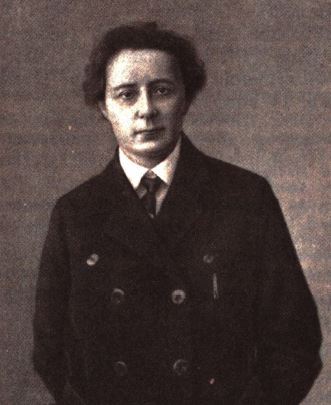
Working with wounded patients, Vera took detailed notes which allowed the making of the connection between injuries and the weapon used to inflict them. Interestingly, Vera did not shy away from abdominal operations, which was irregular due to previous thoughts that such injuries were ‘inoperable’. Often, patients with such injuries were refused surgery and were sadly left to pass away.
Following the War, Vera worked provincially, attending to 125,363 patients. This pioneering work was recognised by Tsarina Alexandra Feodorovna in 1909, who invited Vera to take the position of Senior Court Physician. Vera was the first woman to serve as a physician in the Imperial Palace. Vera wrote ‘Conversations on Surgery for Sisters and Doctors’ to help the Palace understand the profession. Vera would eventually write 58 scientific papers. Vera earned a Doctorate of Surgery on May 11 1912, the first woman in the history of the University of Moscow to do so.
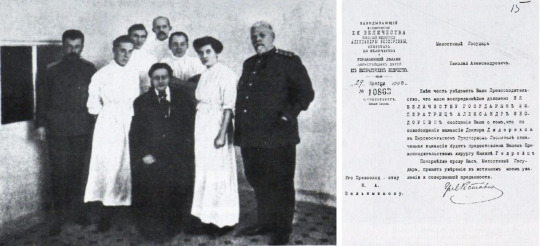
Following the outbreak of the First World War, Vera helped to install physiotherapy equipment and X-ray machines in hospitals to aid recovery. Vera taught Tsarina Alexandra Feodorovna and her daughters, Grand Duchesses Olga and Tatiana, medical work, and they assisted with operations. Vera worked alongside Imperial Physician Dr. Evgeny Botkin to help connect infirmaries to railways and supplies. Vera occasionally travelled to the front lines to help provide surgery directly at the scene, and in one case performed over 30 operations over a three day period.
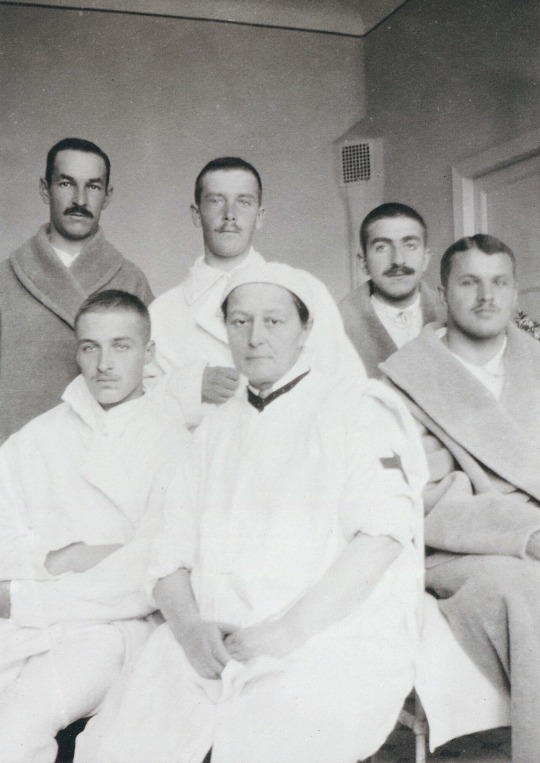
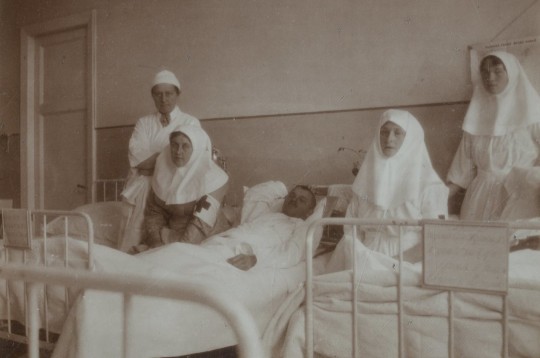
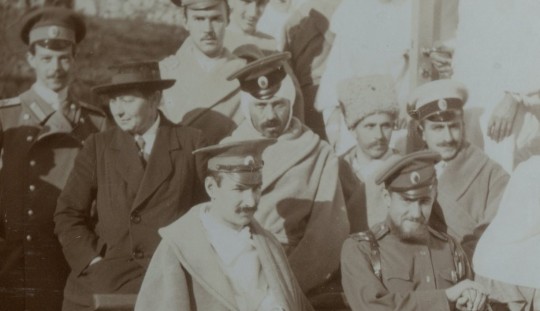
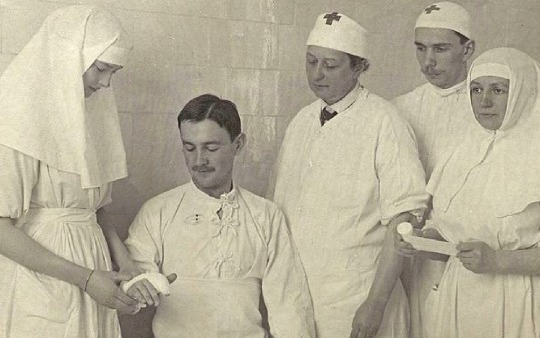
Vera is recorded as having little patience for the infamous Grigori Rasputin, with one source recording the shoving of Rasputin ‘into a corridor when he refused to get out’ of the way.
There are no records that suggest that the patients or the Romanovs objected to Vera's sexuality, though there was disapproval of her continuing to remain in Tsarskoe Selo to continue military surgery after the Revolution. If anything, she was renowned as one of the most capable and intelligent women of the era. Vera wore a surgeon's cap rather than the head coverings that nurses and Sisters of Mercy wore.
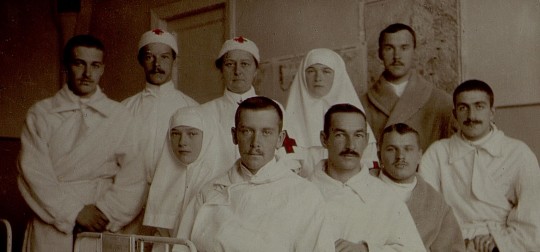


During the First World War, Vera met fellow nurse Countess Maria Dmitrievna Nirod-Mukhanova, a widowed maid-of-honour at the palace. The pair fell in love and started a relationship, which would last for the rest of Vera’s life. Maria had three children: Dmitri Feodorovich, Marina Feodorovna, and Feodor Feodorovich. The children knew about their mother's relationship with Vera, as they lived as a married couple whilst caring for and raising them. Some sources suggest that Vera and Maria had a marriage ceremony.

By the late 1920s, Vera was living with Maria, who worked as a surgeon, in Kyiv after the couple and Maria’s children escaped Revolution, taking refuge with monks. They spent eighteen years together. The pair lived as a married couple. In 1932, Vera passed away aged 61 after a diagnosis of uterine cancer. Maria continued Vera’s work by operating a pharmacy that provided free medicine to the poor. Maria passed away in 1965 aged 86. The above image is the only photo that has been attributed to her.
Vera defied all the social norms, becoming a pioneer of medicine and challenging traditions within the profession, saving thousands of lives in the process. Vera’s legacy lives on today.
SOURCES:
Hands that bring back to life. Vera Ignatievna Gedroits - surgeon and poet by V.G. Khokhlov
Beinecke Rare Book and Manuscript Library
Wartime albums of Olga Nikolaevna and Tatiana Nikolaevna, Last Romanovs on Flickr
The Princess who Transformed War Medicine - BBC
Princess Vera Gedroits: military surgeon, poet, and author by J.D.C. Bennet
The Diary of Olga Romanov : Royal Witness to the Russian Revolution by Helen Azar
Tatiana Romanov, Daughter of the Last Tsar : Diaries and Letters, 1913-1918 by Helen Azar and Nicholas B.A. Nicholson
#Vera Gedroitz#Vera Gedroits#lgbt history#lesbian history#Alexandra Feodorovna#Olga Nikolaevna#Tatiana Nikolaevna#Maria Nirod Mukhanova#medical history#Russian history#pride month#tw sui#image described#queer history
240 notes
·
View notes
Photo






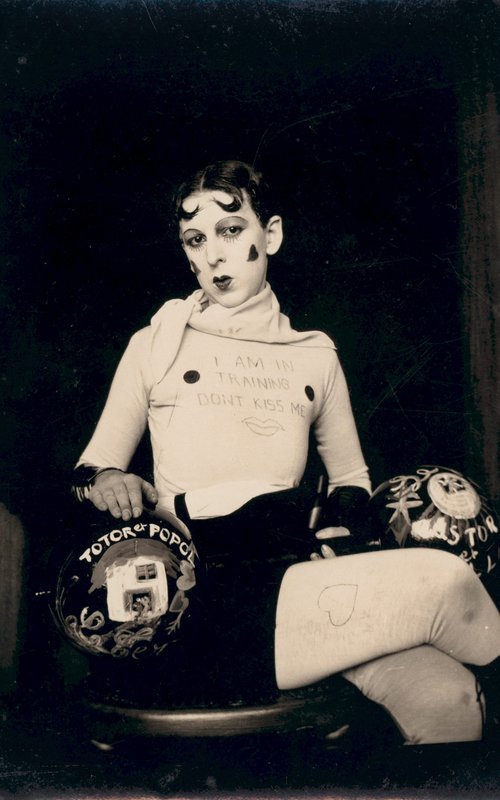
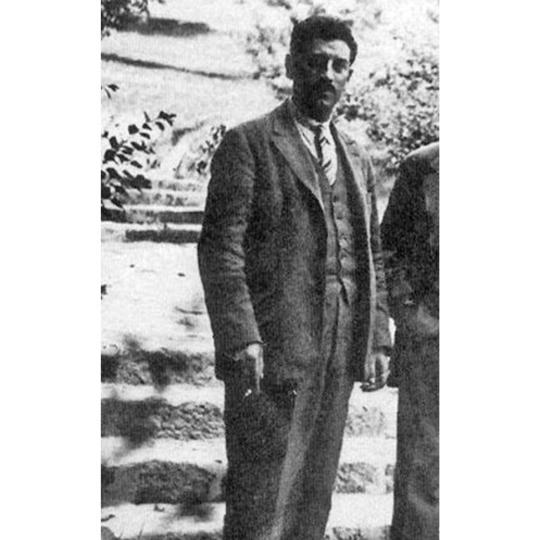
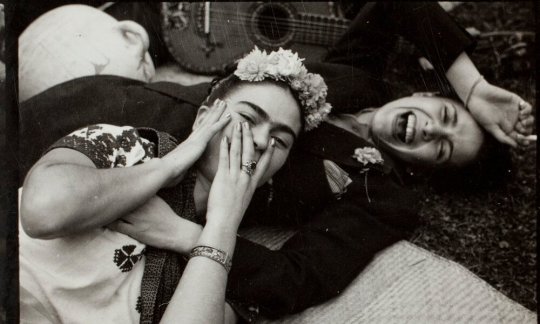
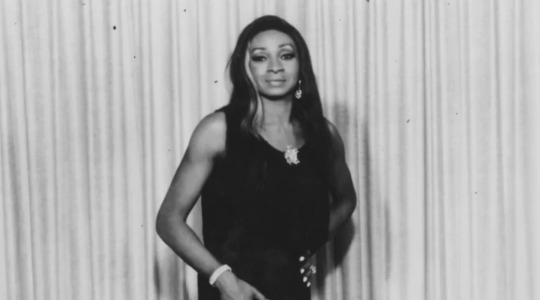
I was talking with a friend recently about our favourite images from queer history, and while I adore the compilations of photos of people being explicitly and obviously queer, I wanted to share some of the images that have touched my heart. All of these are of queer subjects and I have linked some articles about the people in question below, in case anyone is interested! I have a lot more so tell me if y’all are interested.
Princess Vera Gedroitz
Marsha P. Johnson & Pride
The Story of the Ladies of Llangollen
Amrita Sher-Gil
Carlos Jáuregui
Cássia Eller
Claude Cahun
Bajazid Doda
Chavela Vargas
Jackie Shane
#queer history#making queer history#lgbt history#lesbian history#transgender history#trans history#gay history#bisexual history
5K notes
·
View notes
Text
Vera Gedroitz
Noble, cirujana y escritora pionera en Rusia y el mundo
La princesa Vera Ignatievna Gedroitz (1870 – 1932) fue una princesa lituana-rusa doctora en medicina, profesora, la primera cirujana en Rusia, una de las primeras profesoras de cirugía en el mundo y escritora de poesía y prosa.
Gedroitz pertenecía a un clan principesco lituano que compartía sus orígenes con la más famosa familia Radziwiłł.…
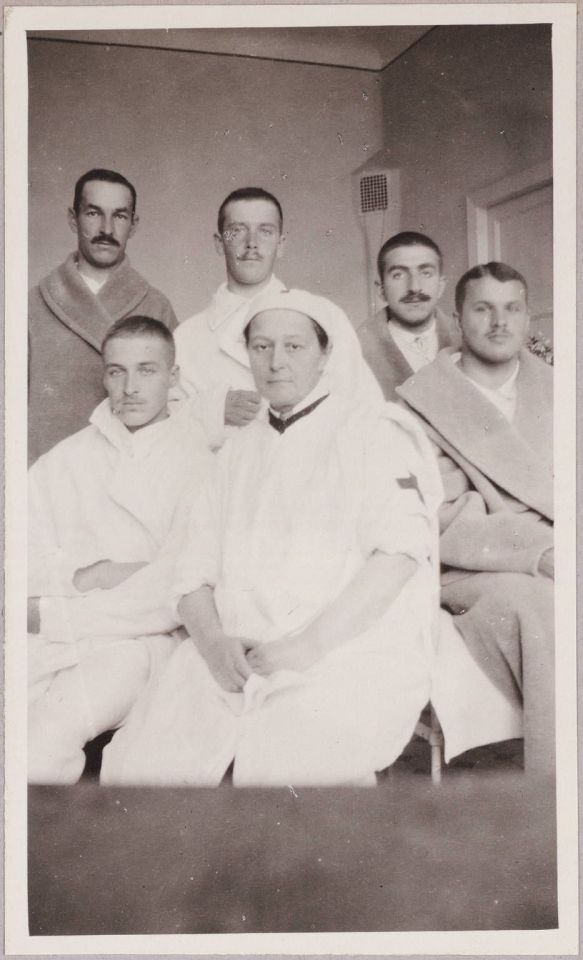
View On WordPress
1 note
·
View note
Text

Empress Alexandra Feodorovna of Russia with her two eldest daughters the Grand Duchesses Olga and Tatiana Nikolaevna Romanova of Russia as Red Cross nurses.
When WWl broke out the Romanovs devoted all of their time to organizing assistance for the army and the general population.The Alexander Palace at Tsarskoye Selo was turned into a hospital.
The Grand Duchesses, 19-year-old Olga Nikolaevna and 17-year-old Tatiana Nikolaevna spent months there working as Red Cross nurses.
The Tsarskoye Selo hospital was the idea of Princess Vera Ignatievna Gedroitz, Russia’s first female surgeons. She became the director of the hospital, imposing an almost military discipline: members of the royal family reported to the director and other surgeons like ordinary nurses.
The Imperial royal family was inspired by the work of Duchess Natalia Shakhovskaya, who established her own community of sisters of mercy called “Assuage my Sorrows” in 1866. Alexandra Feodorovna valued Shakhovskaya’s work highly, and even sent her a telegram of encouragement: “His Majesty and myself wish, with all our hearts, much success to your benign undertaking.”
The Empress forgot all about her ailments. Empress Alexandra Feodorovna assisting surgery together with her daughters Tatiana & Olga
The Empress has invested a lot of labour in this hospital. No other monarch of Europe has done anything of this sort. Every day, together with her daughters, she would work from nine in the morning until two at night, and sometimes later. She would invariably return in the evening, and at times, when critically wounded men were brought to the hospital, she would stay and spend the night.
The hospital, located in one of the palace’s wings, could care for up to 200 soldiers and 30 officers. It was fully equipped for surgery and had the most up-to-date X-ray labs. Some patients were sent for rehabilitation in the peaceful Finnish countryside. Mobile operating theaters brought the wounded to Tsarskoye Selo aboard a hospital train named in honour of Tsarevich Alexei Nikolaevich Romanov of Russia.
6 notes
·
View notes
Text
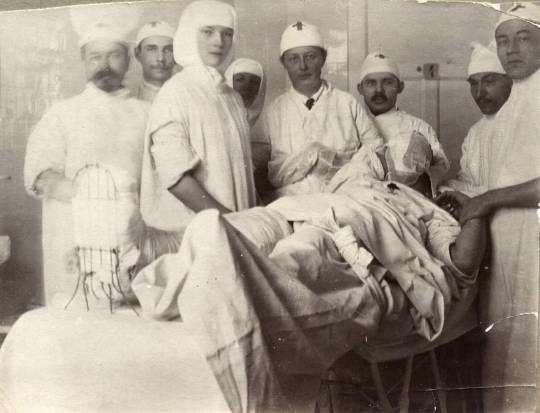
Grand Duchess Tatiana Nikolaevna Romanova of Russia with staff of the Infirmary including Princess Vera Gedroitz.
3 notes
·
View notes
Text
Google Doodle: αφιερωμένο στην Vera Gedroits, πρωτοπόρο χειρουργό
Google Doodle: αφιερωμένο στην Vera Gedroits, πρωτοπόρο χειρουργό
Το σημερινό Doodle της Google γιορτάζει τα 151 χρόνια από τη γέννηση της Vera Gedroits., Ρωσίδας χειρουργού, καθηγήτριας, ποιήτριας και συγγραφέως. Η Vera Ignatievna Gedroitz είναι η πρώτη γυναίκα στρατιωτική χειρουργός της Ρωσίας και από τις πρώτες γυναίκες καθηγήτριες χειρουργικής στον κόσμο και εισήγαγε πολλές καινοτομίες στον τομέα της ιατρικής στον πόλεμο.
Η Vera Gedroits γεννήθηκε το…
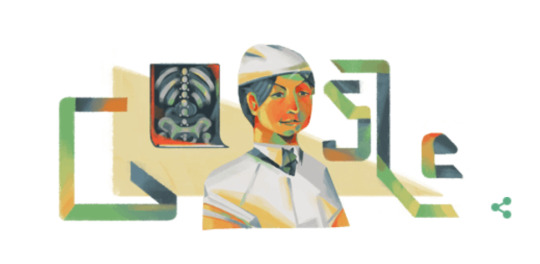
View On WordPress
0 notes
Photo
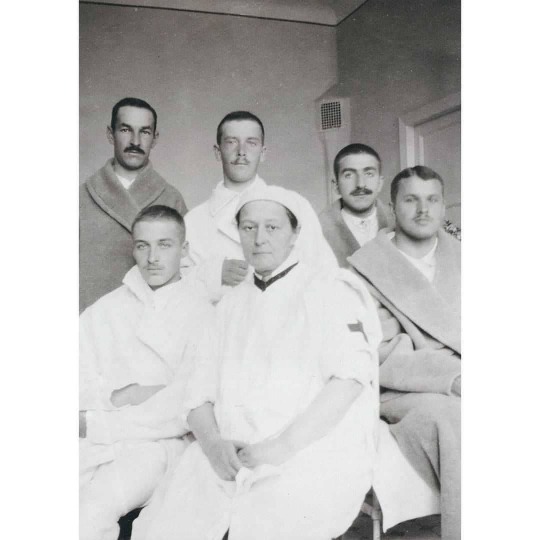
Posted @withregram • @makingqueerhistory [Image Description: black and white photo of a group of six people with Princess Vera Gedroitz]⠀ Princess Vera Gedroitz was born on April 7, 1870.⠀ ⠀ An open lesbian Vera Gedroitz became a doctor working in underserved areas for some of her career. During her time there, she performed 248 operations including amputations, herniation repair, and bone setting. She noticed that poor working conditions were causing more health problems and wrote a list of recommendations, including proper hygiene and sanitation, providing washing tubs, and serving hot meals.⠀ ⠀ In 1904, Gedroitz volunteered to go to the front lines of the Russo-Japanese War with the Red Cross. Within the first month, she treated up to 1,255 patients and became known for her thorough care of a wide range of injuries. She was appointed Chief Surgeon of the hospital train and ignored standard protocol in favour of treating abdominal wounds. She became the first person to perform laparotomies on military patients. Because of her experience with abdominal surgeries and her quick response time, her success rate was quite high. Her work led to changes in recommendations in international medical journals to support her methods.⠀ ⠀ In 1909 the Tsarina Alexandra Feodorovna invited Gedroitz to become the senior resident physician at the Tsarskoye Selo Court Hospital, making her the first female physician of the royal household. While working there she trained the Tsarina and her daughters to become nurses, even writing a textbook for them of medical information in laymen's terms. ⠀ ⠀ It was during her time at the Tsarskoye Selo Court Hospital that she returned to a choice she'd embraced in childhood, wearing traditionally masculine clothing. She was open about her relationships with women. She also began writing, becoming a member of the Poets Guild and supporting young writers.⠀ #princessveragedroitz #queerdoctor #lgbtdoctor #lesbian #lesbiandoctor #lesbianhistory #russianhistory #lgbt #queer #queerhistory #lgbthistory #gayhistory https://www.instagram.com/p/B_h1Tg4DTSIlaAy2JmYLzEjQpiZWs13tYs9Kfw0/?igshid=vdsjhjhmznik
#princessveragedroitz#queerdoctor#lgbtdoctor#lesbian#lesbiandoctor#lesbianhistory#russianhistory#lgbt#queer#queerhistory#lgbthistory#gayhistory
0 notes
Note
What was Vera Gedroitz like? I have heard that she was “mean” or have heard her been talked about in a negative way, but honestly she is someone to look up to. A openly gay nurse, like that’s someone that I would look up too. Did the girls like her? Did the little pair even get to know her because she wasn’t at their infirmary? Thanks bestie! 🤍
Hi! Thank you so much for the question - sorry for the delay! I do love talking about Vera, so here we go...
Vera's personality
Vera was known to be gruff and commanding. Unfortunately, little is written directly about Vera's personality, as much of the primary sources focusses on her "unusualness" instead: her way of dressing (always masculine clothing), speaking in a low, gruff voice gravelled by years of cigarette smoke, and her relative openness about her sexuality. However, there was a warmer, more romantic side to Vera. She wrote poetry, sought the companionship of literary circles, and turned the grief of losing her brother during childhood into a truly revolutionary medical career. She could be brusque and private, possessing a no-nonsense attitude, but also incredibly compassionate and kind. She spent the last years of her life running a pharmacy with her wife, giving medicine and medical aid to the poor completely for free.
Was she liked by OTMA?
We can infer that she was, indeed, liked by OTMA, or at least by Nicholas and Alexandra. As a doctor to the royal household (who was specifically requested by Alexandra) she would have been held in high esteem. It is believed that Vera was also an occasional doctor to the imperial children: Nicholas and Alexandra's tendency to dismiss staff which they saw as behaving immorally, or being difficult in some way (especially when it came to those caring for their children) implies that they had warm feelings towards Vera due to her continued employment.
In fact, fellow nurse Valentina Chebotareva's diaries are very revealing of this relationship: when Anna Vyrubova was struck by a train, she noted in her diary that the Tsar "spoke for a long time" with Vera, entrusting her with Anna's care. She also wrote in 1917 that "I talked to Vera Ignatievna about the past. How close the Empress had been to her at the beginning of the war", implying that their relationship did decrease as Rasputin's influence monopolised. Vera had no time for Rasputin - one quite famous anecdote describes him standing in her way and Vera physically pushing him into a corridor to be rid of him lol. Despite this strain on her relationship with the Romanovs, and her activity in revolutionary groups during her youth, Vera remained fond of the family. She had, after all, taught Alexandra, Olga, and Tatiana personally during their nursing training. When the abdication was announced, Valentina wrote that Vera "sobbed like a helpless child."
It is from Tatiana's diaries where we learn the most about the sister's relationship with Vera. Ever detail-oriented, Tatiana's diaries are a beautiful patchwork of notes and observations about her patients and fellow workers. Interestingly, in her 1914 diary, Tatiana usually refers to Vera as "The Princess", reference to her royal title, rather than by her name in line with the doctor/tutor role that she had with the Grand Duchesses. This later changes to her first name and patronymic.
Monday 8 September 1914: "...Had tea with Papa and Mama, then the princess came over."
Wednesday 24 September 1914: "...From there to the infirmary with the princess... Had a lesson. The Princess was here."
Thursday 25 September 1914: "Had a lesson in the morning. At 11 o’clock again, like yesterday, we picked up the princess and went to the infirmary."
Letter from Tatiana to Nicholas II, 19 November 1914: "They took out a tiny fragment from Gogoberidze’s leg, but it was so small that the Princess was looking for it for almost a half hour and finally found it with difficulty. It was about this big “O,” no bigger."
Letter from Tatiana to Vera Cheborateva, 14 April 1917: "And where do Rita, ... and Vera Ign. live now?"
Letter from Tatiana to Vera Cheborateva, 8 January 1917: "We heard what Vera Ignatievna has turned into, and how she is walking around. How fast people change— it is even funny!"
Letter from Tatiana to Rita Khitrovo, 23 January 1918: "[The Baron] also wrote to me and said that he saw Vera Ignatievna at the infirmary. She is [wearing] epaulets, large boots with spurs, did not even ask the Baron how he was doing. So shameful. I did not expect how fast she would change. Although lately she had been very strange."
It is interesting here that Tatiana remarks about Vera's clothing - many photographs show that Vera had always dressed in the masculine style around the infirmary (suits, long coats, even masculine medical outfits), including in the presence of the Romanov family, so this would not have been a new or unusual phenomenon for the Grand Duchesses. Vera even sent this photograph of herself to Olga in 1915 - wearing a masculine style! She was not subtle.
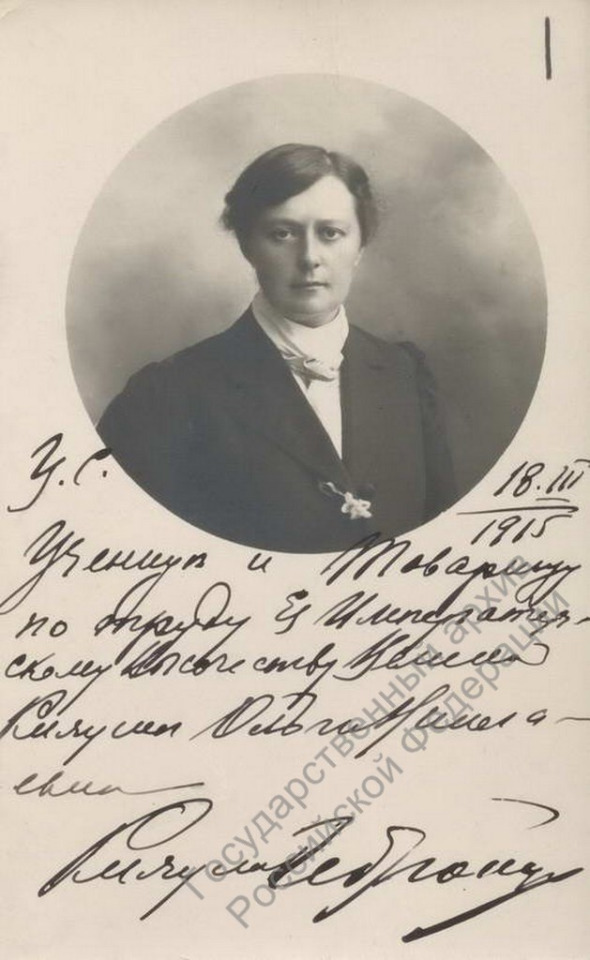


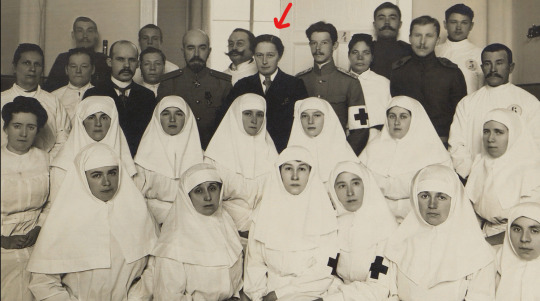
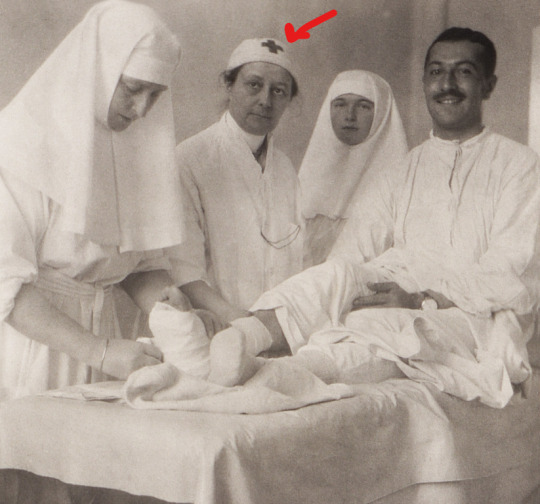
(That's one happy patient!) ... From these photos and documents you can clearly see that Alexandra, Olga, and Tatiana were very happy working alongside Vera who clearly more traditionally masculine clothing - I've pointed out Vera for ease of identification.
Perhaps Tatiana was pointing out this social irregularity in light of what she saw as a betrayal: I think it's very important to highlight the difference in their diaries before and after the Revolution. Vera stayed in the capital for a brief time, and could not openly support the Romanov family without compromising her work as a doctor. Eventually, she joined the 6th Siberian Rifle Regiment (which was still technically considered imperial) in order to provide surgery on the front lines which simultaneously escaping the capital. Valentina Chebatoreva's diaries make it very clear that Vera did not keep up correspondence with and/or show support for the Romanovs as it would have compromised her medical work: "Vera Ignatievna finds that it is impossible to answer each one [letter] so as not to give the impression of a "party"." I'm of the opinion that Tatiana's souring opinion towards Vera came from her mistaking Vera's self-preservation of herself and her work through not showing active support or maintaining correspondence to have been a betrayal.
Vera's whole life was medicine: she emigrated to Russia to study medicine, she became the first Russian woman doctor, she served in the Russo-Japanese War, First World War, and Revolutionary conflicts, she found her life partner Maria Dmitrievna through medicine, and even in retirement worked tirelessly to deliver healthcare and treatment to those less fortunate than her. It appears to Vera that, in order to continue to save lives, correspondence with the Romanovs was too much of a risk.
Did the little pair know her?
This is a great question! Off the top of my head, I can't recall any direct references to Vera in their diaries. Unlike Olga and Tatiana's diaries, the little pair's letters and diaries aren't available to read and search online, so I'm having to rely on my memory of reading those books unlike the ability to digitally search the big pair's for any mentions of Vera.
If we look through their albums however, we can see multiple photographs of Maria and Anastasia visiting Olga and Tatiana's infirmary and being photographed with the staff: including Vera. There are also photographs of Olga and Tatiana with Vera in the little pair's albums, implying that they took the photos. They may not have known her as well as Olga and Tatiana, but considering their visits to the big pair's hospital and Vera's visits to the palace, she was definitely an acquaintance.
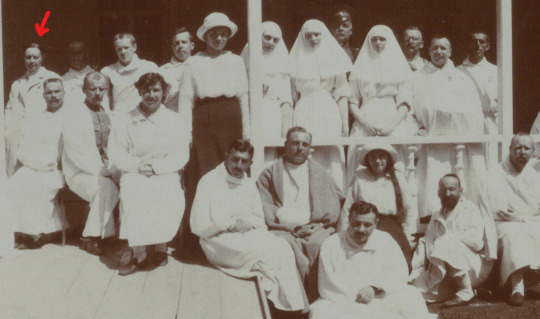
To conclude: Vera definitely wasn't to everyone's taste, especially those who preferred the image of a conservative, reserved woman. She was authoritative and determined - brilliant qualities for a doctor, though not encouraged within noble women. The Romanovs, during their friendship with her, truly appear to not have cared about her sexuality of her preference for masculine fashion (there are some gender historians who would have a much more nuanced take on this) - it was only after the Revolution, and her perceived turning against them, that these qualities were problematised. Vera was different, brilliantly so. She fought for what she wanted, what she needed. And, despite the definite constraints of the time, she was free.
I hope this answered your questions! I'm always happy to talk about Vera :)
Sources:
Tatiana Romanov, Daughter of the Last Tsar : Diaries and Letters, 1913-1918 by Helen Azar and Nicholas B.A. Nicholson
Photograph of Princess V.I. Giedroyts with a gift inscription to Grand Duchess Olga Nikolaevna. 18 March 1915. GARF. Ф. 673. Op. 1. Д. 243. L. 1 ob
The Princess who Transformed War Medicine - BBC
Princess Vera Gedroits: military surgeon, poet, and author by J.D.C. Bennet
#q#ask#Vera Gedroitz#Vera Gedroits#lgbt history#queer history#romanov family#russian history#Romanov sisters#Olga Nikolaevna#Tatiana Nikolaevna#Maria Nikolaevna#Anastasia Nikolaevna#Tsar Nicholas II#Alexandra Feodorovna#wwi#lesbian history#romanovs
23 notes
·
View notes
Note
Hi! Do you have any photos of Tatiana Nikolaevna with Dmitri Malama? It is for an edit and I only have two but I need a couple more. I’m digging through Tatya’s albums but i am having no luck identifying him. Thank you!
It's definitely difficult trying to identify him, he of course looks a lot more frail in the photos with Tatiana that in his uniform, but I've tried my best and included some photos I've tentatively identified as him. Here are also some photos that are confirmed to be him, for comparison. Also, he was a cutie!
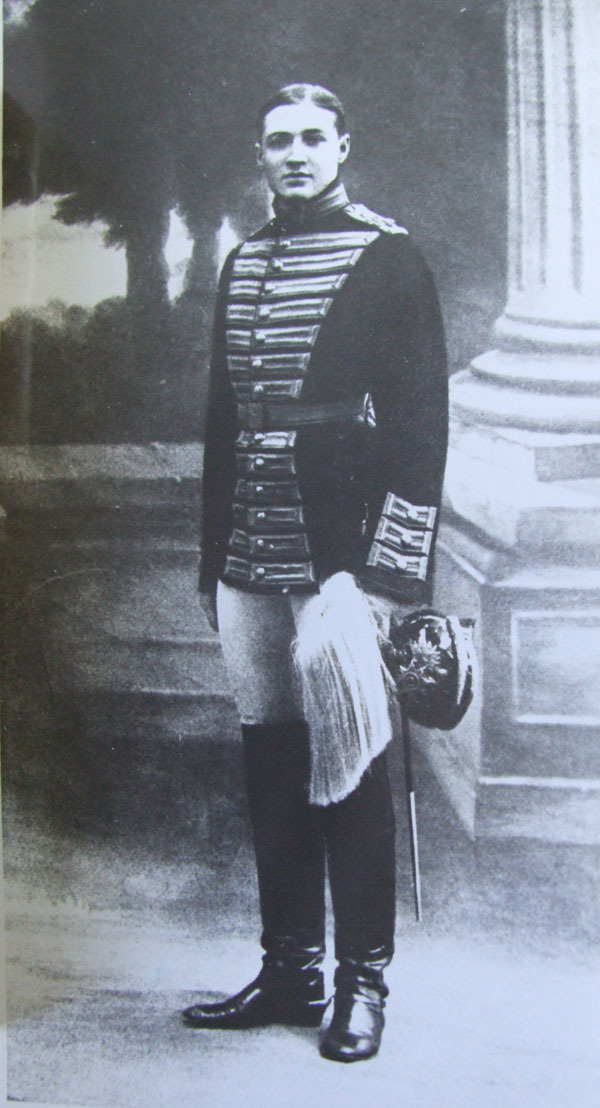

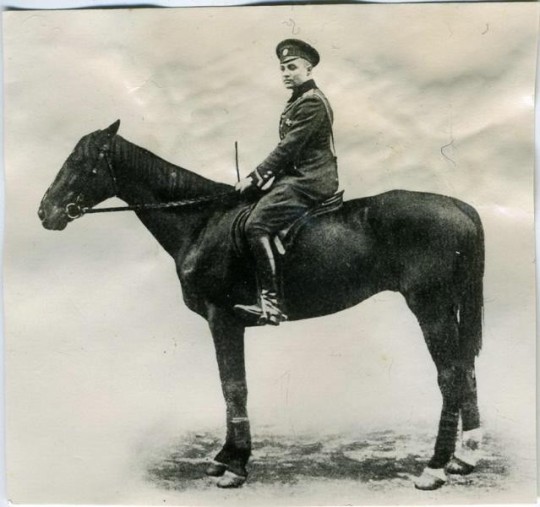
Most of these photos are either from Tatiana's 1916 album, or Anna Vyrubova's album
With Tatiana - he is on the far left on all these photos



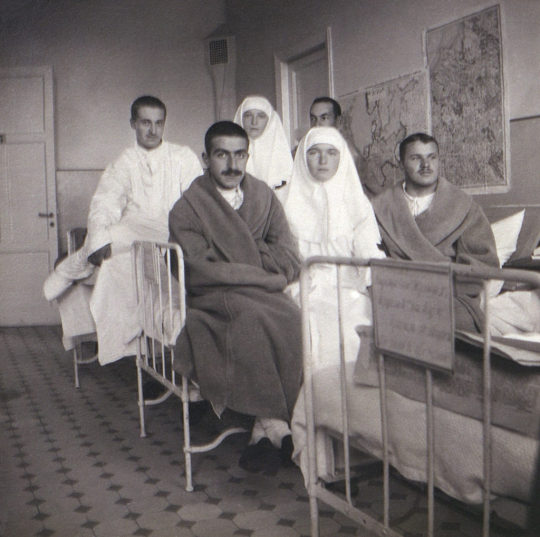
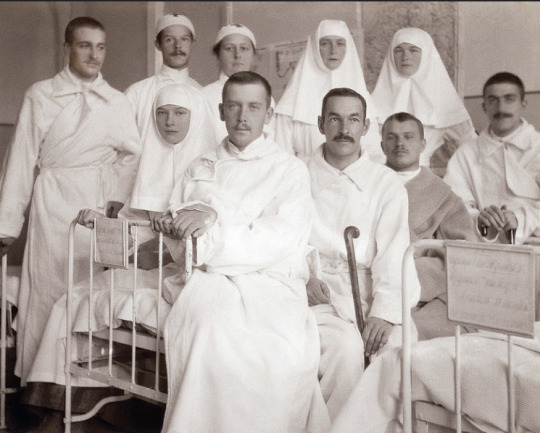
On the far left, sat behind a very happy and adorable Tatiana, and next to Tatiana in the wheelchair (I think!)

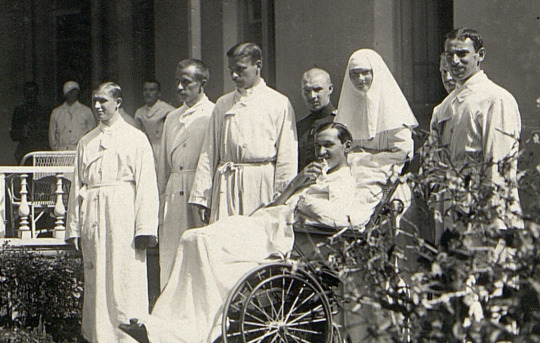
Sat behind Olga. Sadly, poor Tatiana got cropped out of this photo in their album :( And again next to Vera Gedroitz (centre), sat on the left
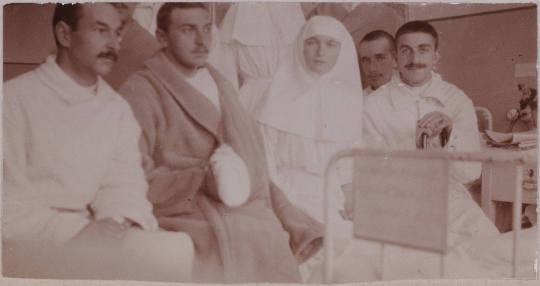


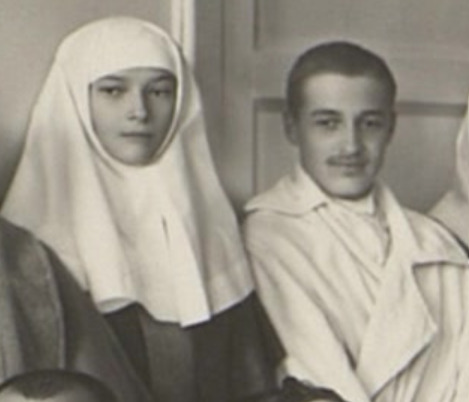
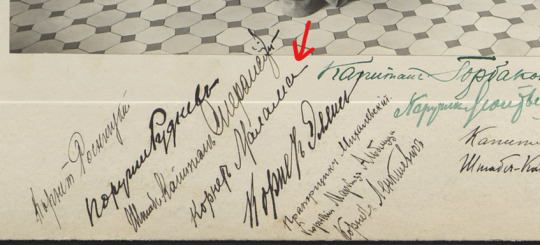
^^ Stood next to Tatiana, smiling! He signed this photograph with 'Kornet Malama', his rank and surname
With other officers and wounded:
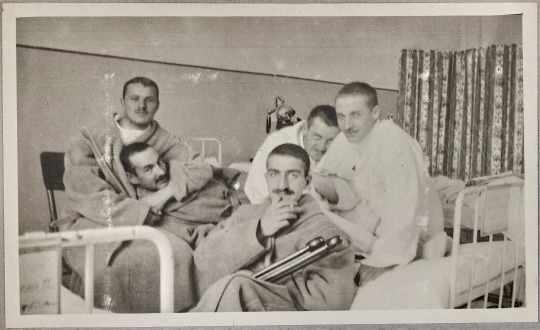
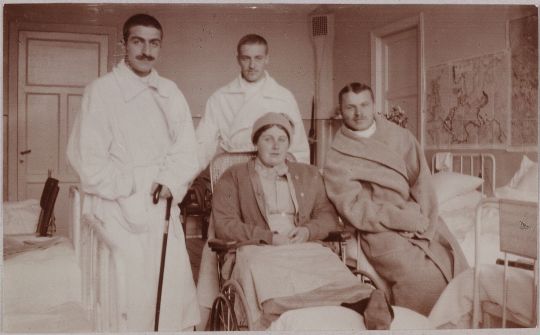
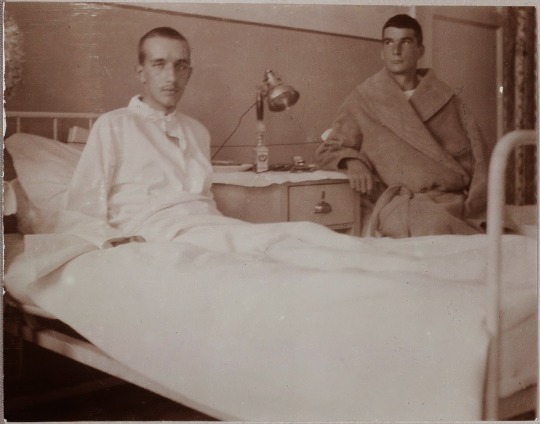

On the far right in white and stood behind Anna Vyrubova. Not sure if the third photo of the man in bed is him or not, but there is some resemblance imo so I put it in :)
He is also featured on this magazine/newspaper cover that depict some of the 'first heroes of the Great War', published in August 1915. Dmitri is number 25.
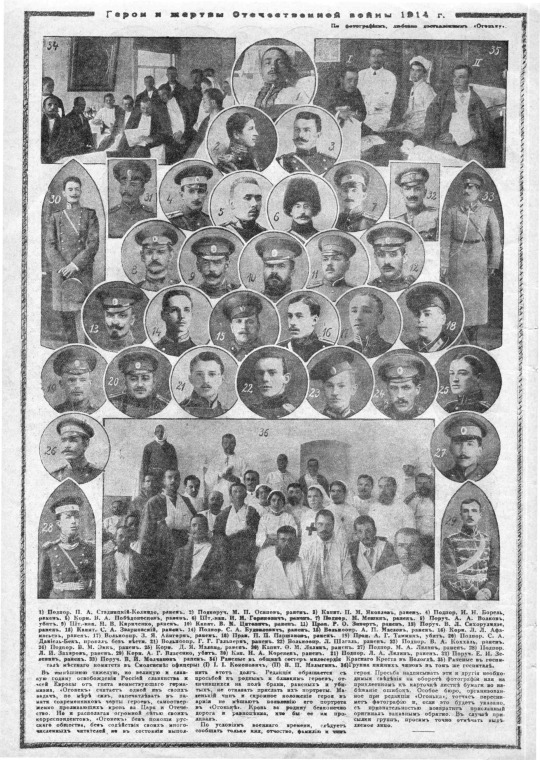
Photos that I often see identified as Malama, but personally I don't see much of a resemblance, but that could just be me! However, in the last photo he is having some form of medical procedure on his leg, which would correlate with the photos of him in a wheelchair. Tatiana wrote something above the photo of the man, but her handwriting... yeah it's too hard for me to read haha, it looks a bit like a T?

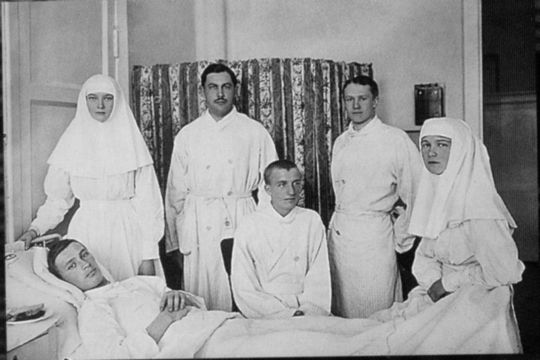
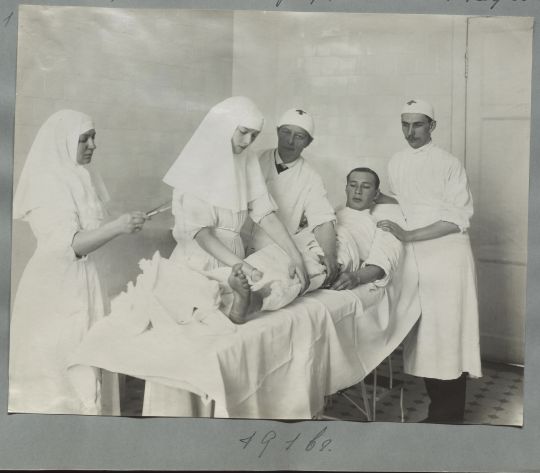

I'm going to leave the decision of whether this young man is Malama up to you :)
I also found this photo of Dr. Vera Gedroitz looking SO stressed, which was too funny not to include. Bless her haha, she needed a holiday.
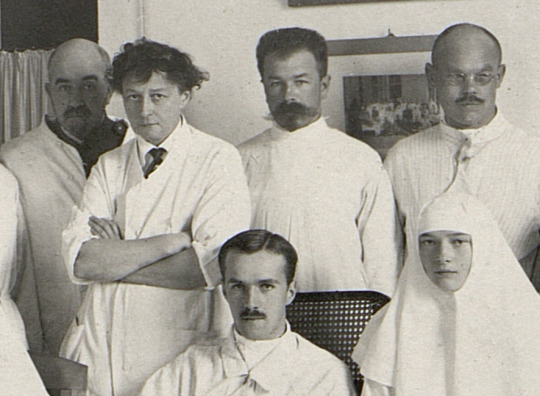
There is also a Russian wikipedia page for him with FABULOUS information, including this note from a fellow patient which said 'Tatyana Nikolaevna always sat near Malama' - so cute!! There is also this photoshop and colourisation by Tatiana Z which might be helpful when translated through google!
I can't help but think about how Alix once wrote that 'he would make an excellent son-in-law'. Perhaps in another universe...

I hope this was helpful! <3
#q#ask#answered#wwi#nursing#Tatiana Nikolaevna#Olga Nikolaevna#Vera Gedroitz#Alexandra Feodorovna#Dmitri Malama#romance#Tatiana Romanov#romanovs
28 notes
·
View notes
Text
MITYA PART TWO
Here are the other photos I found of Mitya. I was so happy and surprised to find so many!
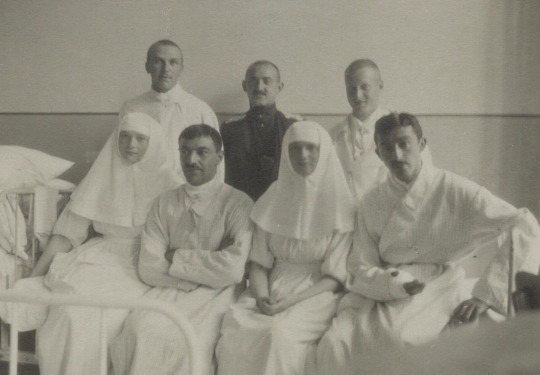
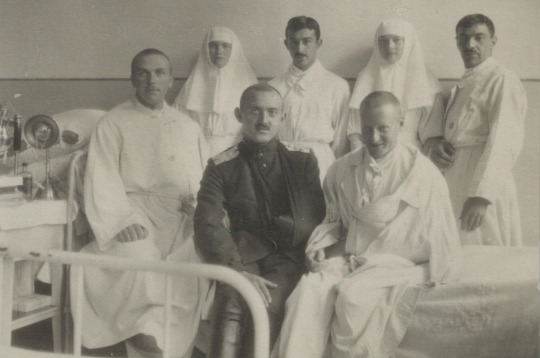
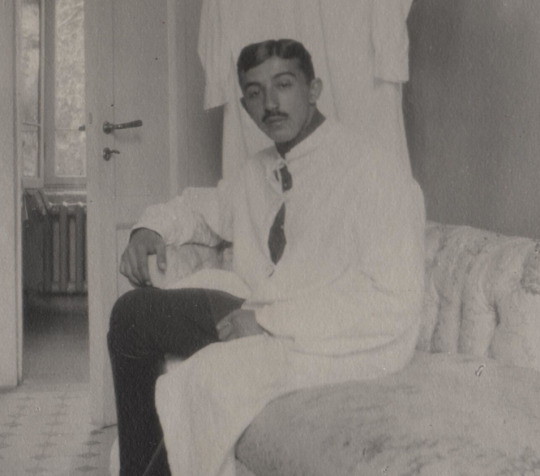
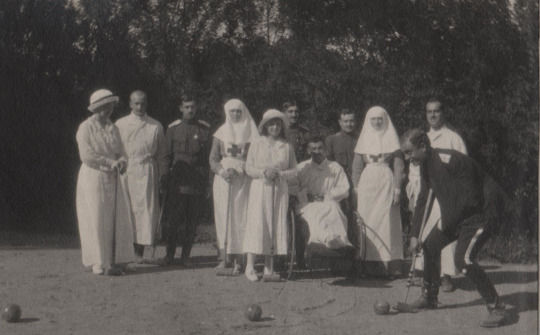
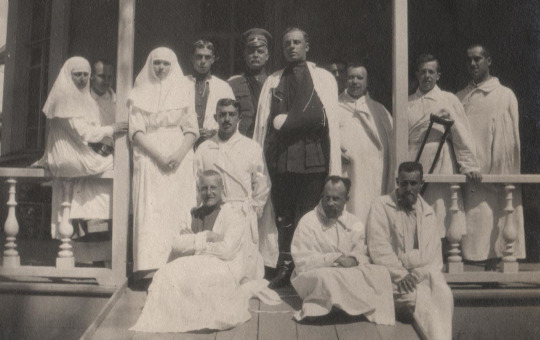
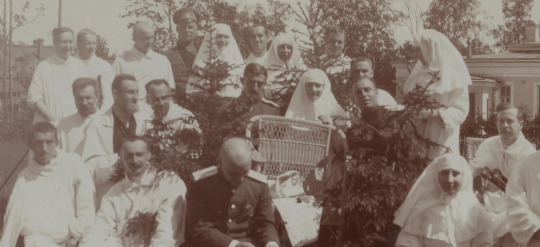
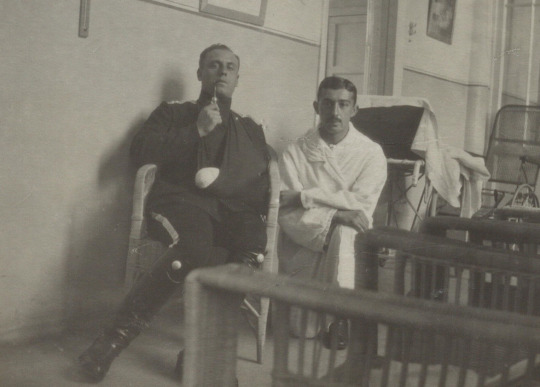



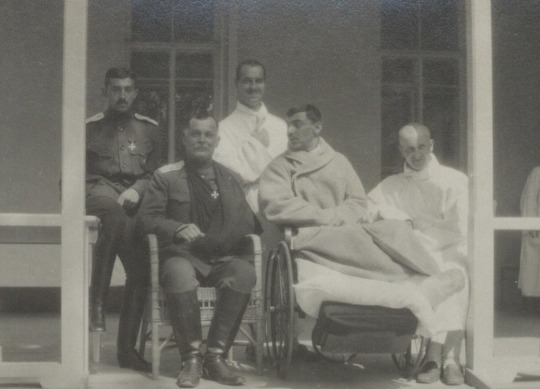

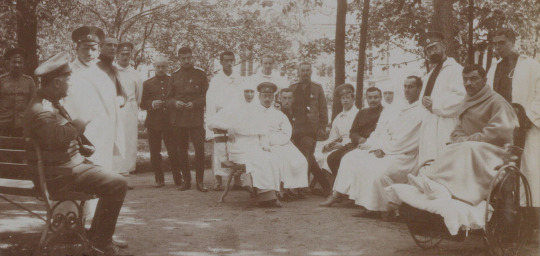

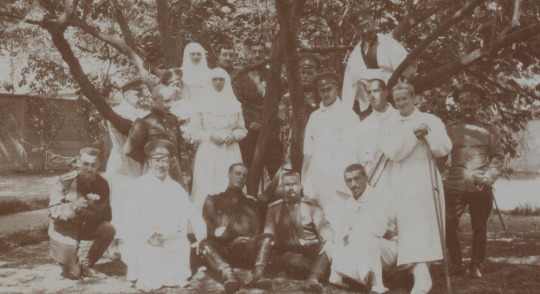


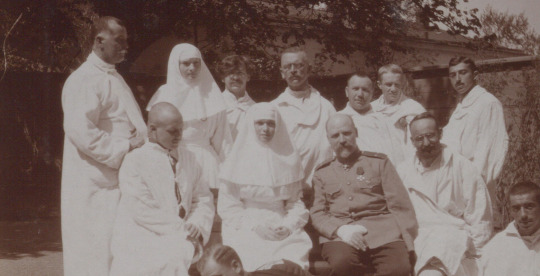
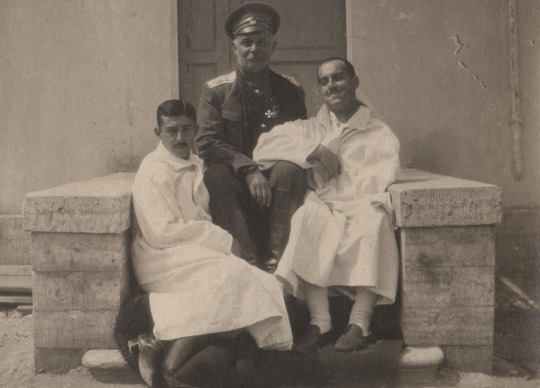

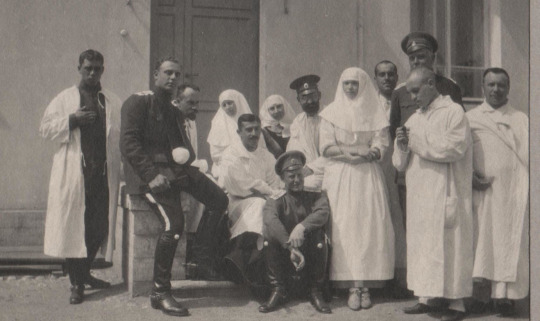
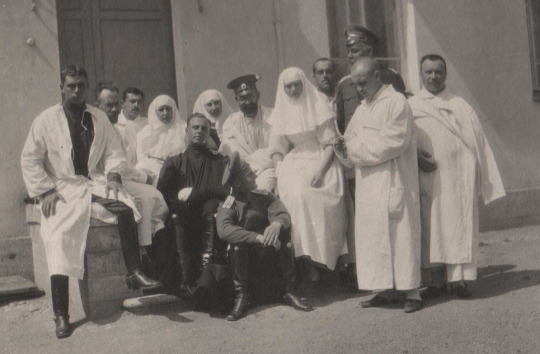
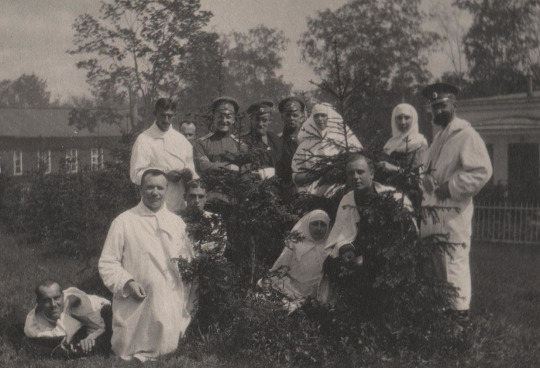
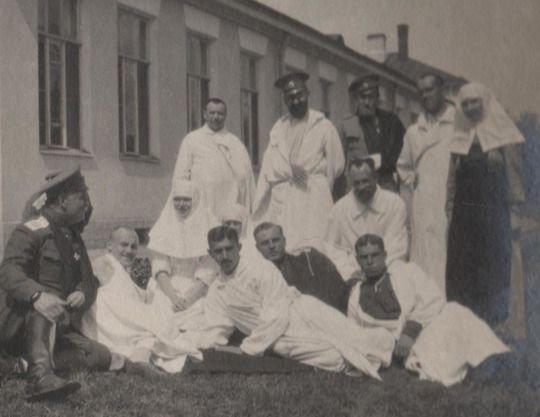
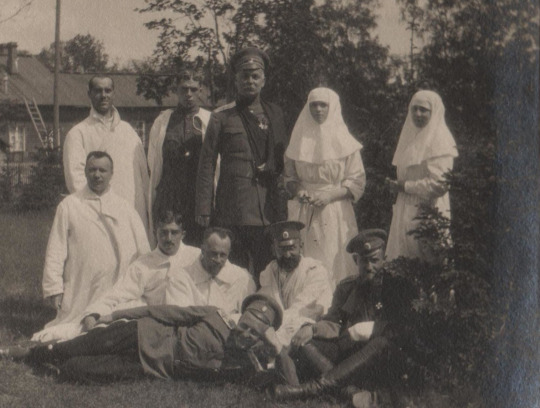
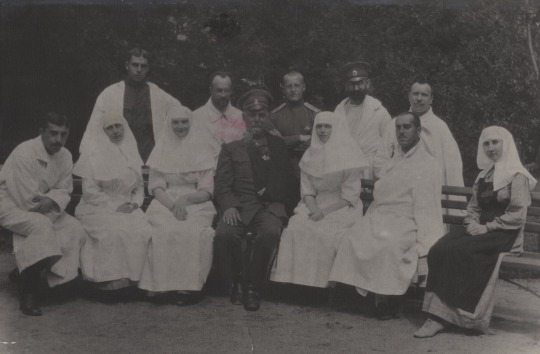

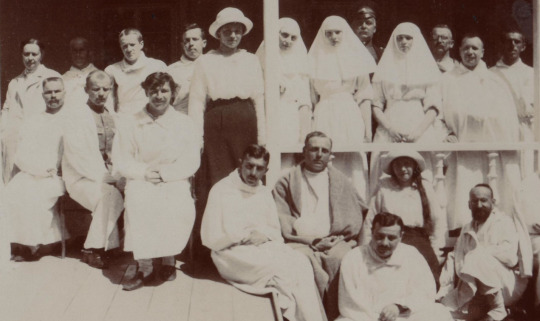
link to part one // link to part three
#Olga Nikolaevna#Olga Romanov#favourite officers#crushes#Mitya#Mitya Shakh-Bagov#Dmitri Shakh-Bagov#wwi#nursing#1915#1916#Tatiana Nikolaevna#Vera Gedroitz#my own#albums
21 notes
·
View notes
Text
MITYA PART ONE
So I had a lot success trying to find more photos of Olga's beloved Mitya! I'm going to have to split this post into two parts there were so many!
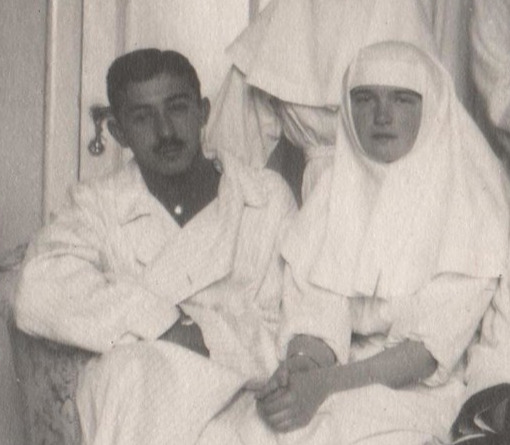
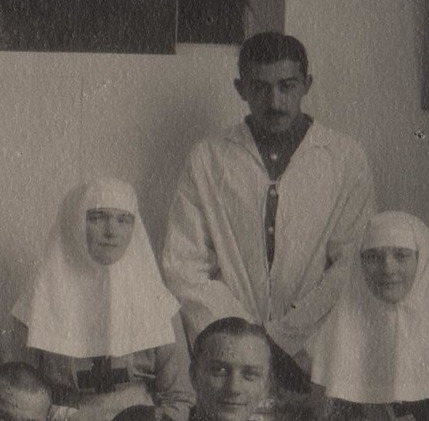
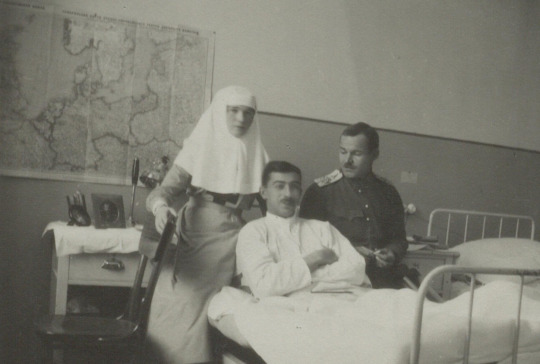
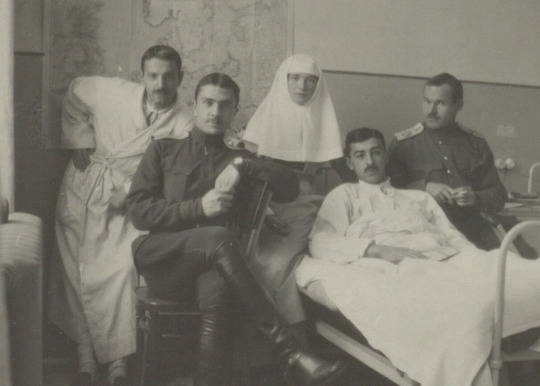
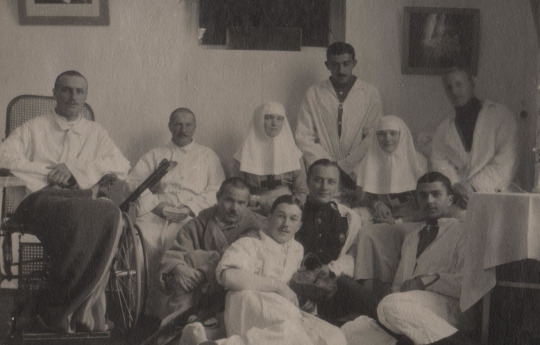
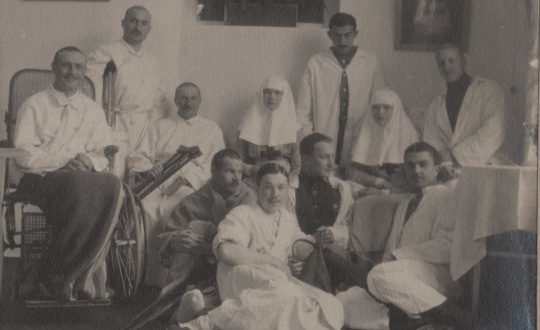


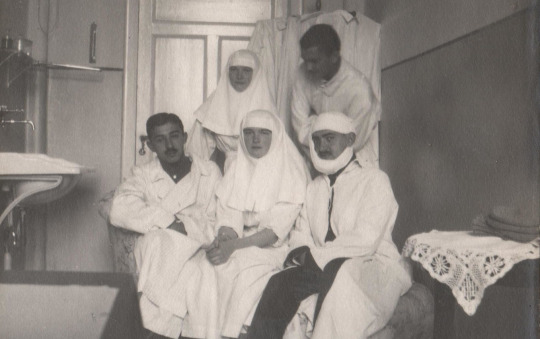
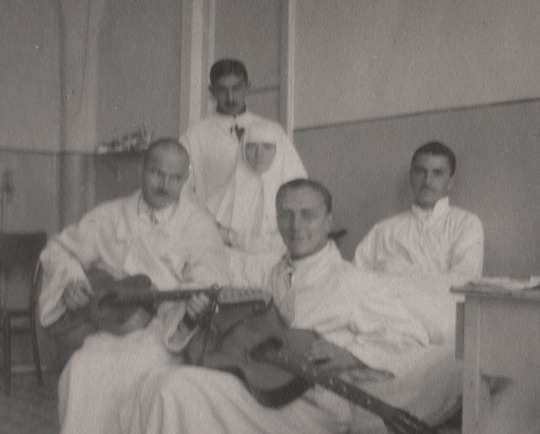
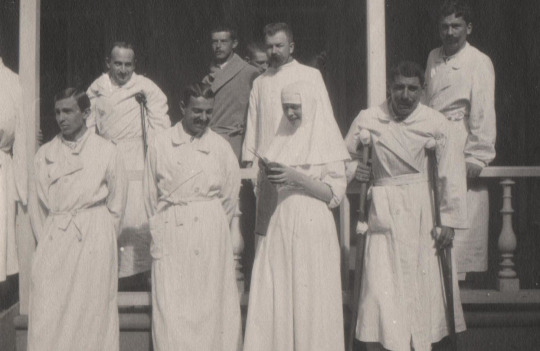

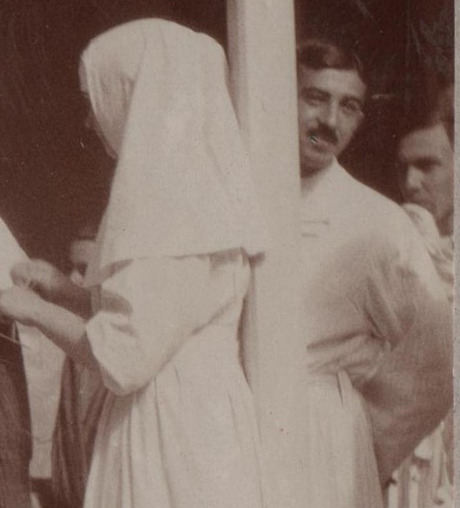
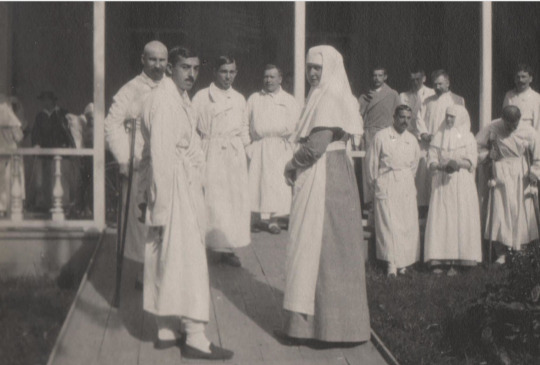
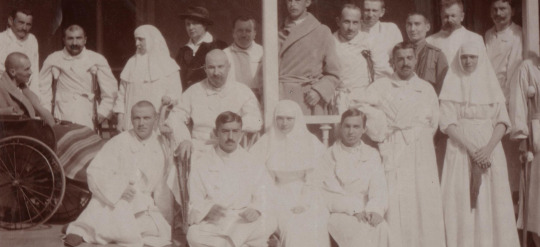
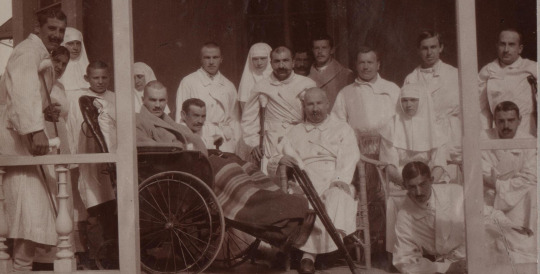
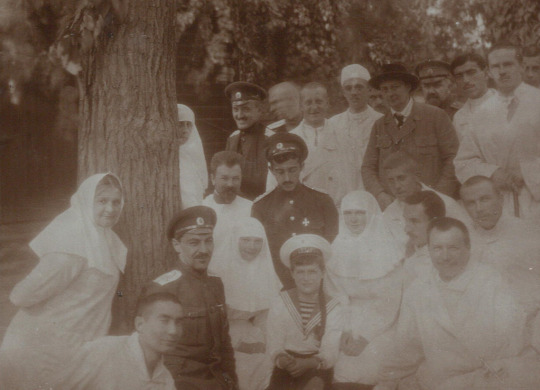
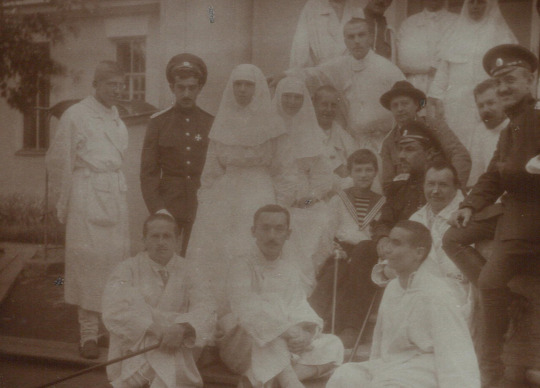
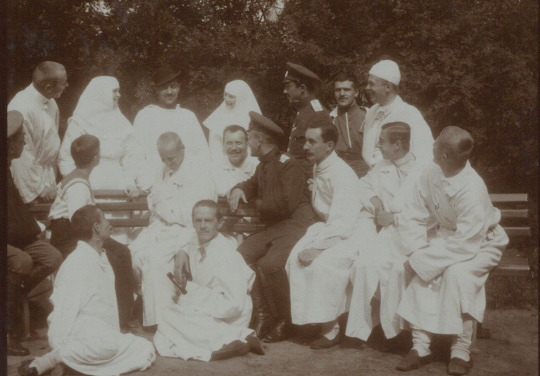
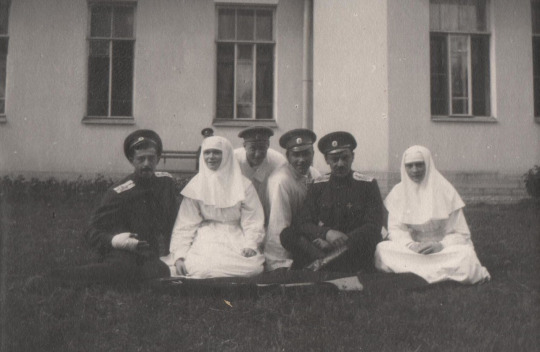

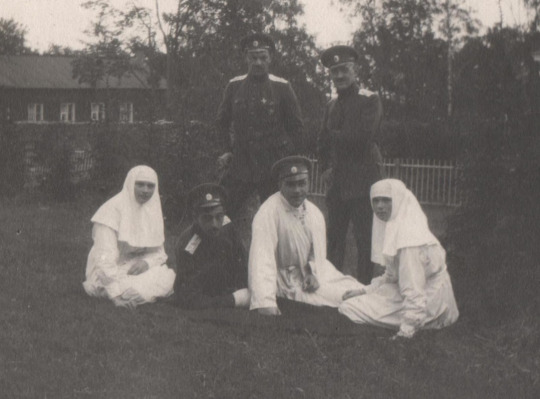
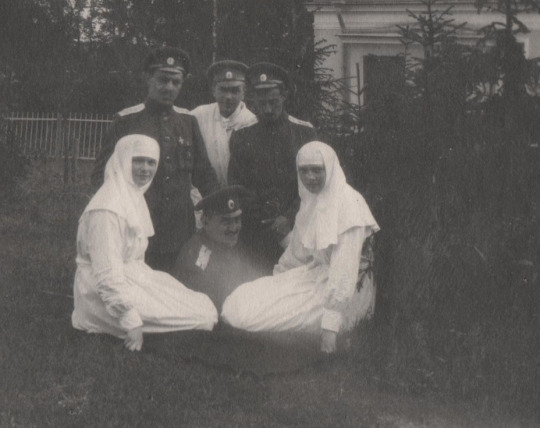

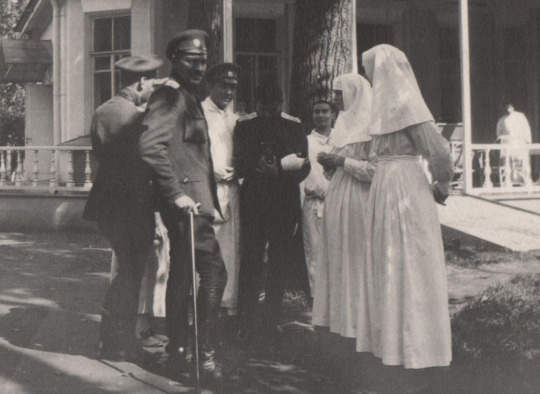
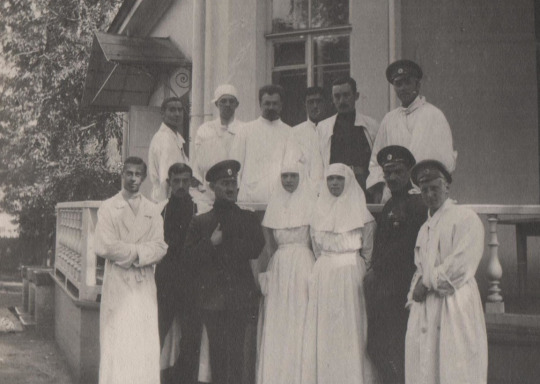
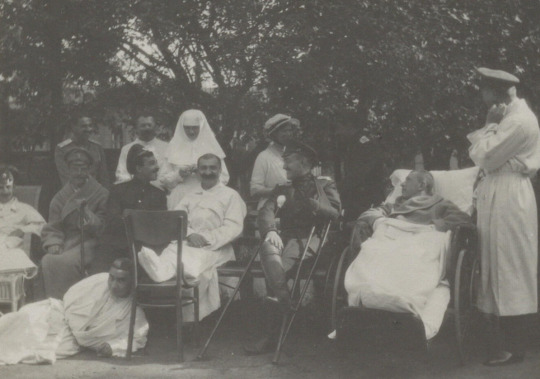
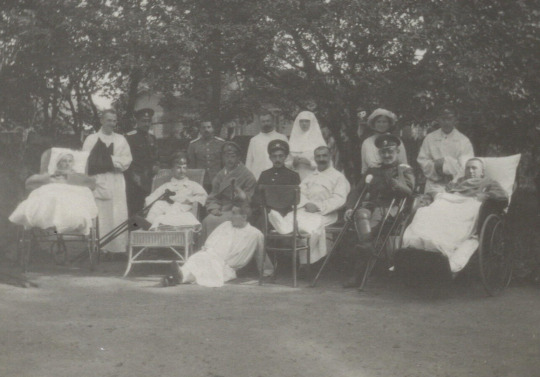
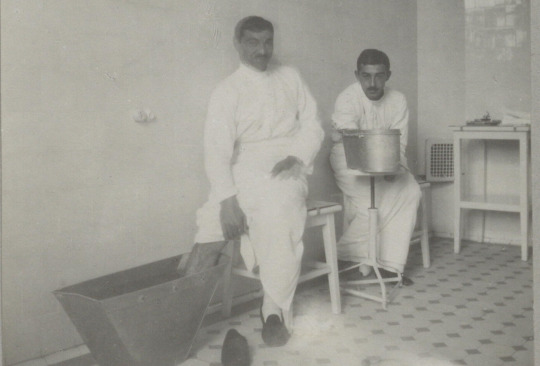
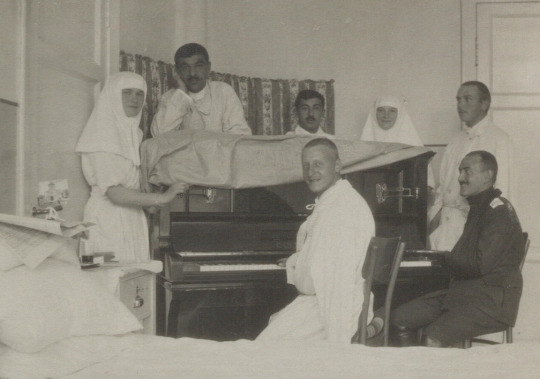
Mitya always strikes me as looking quite shy and a little nervous in photos, and he often looks down for some reason. I struggled to find photos of him smiling or joking around, like a lot of the other officers do. Olga once did write in her diary that he was feeling sad :(
Naturally, there were a LOT more photos of him in Olga's album than Tatiana's. He appears to have been in hospital because of a hand injury.
If anyone wants me to point out where he is in each photo, feel free to comment or message me! I didn't expect to find so many considering how few photos of him come up when you google his name.
link to part two // link to part three
#Olga Nikolaevna#Olga Romanov#favourite officers#crushes#albums#1915#1916#Mitya#Mitya Shakh-Bagov#Dmitri Shakh-Bagov#romanovs#my own#romanov sisters#imperial russia#Tatiana Nikolaevna#Vera Gedroitz
10 notes
·
View notes
Note
Have you got anything on Soviet, post-Soviet or Eastern European queer history? I'm from Ukraine and I've tried to find something but mostly it's just articles about how homosexuality was illegal in USSR, which is obvious.
Yes, absolutely, here is a little list for you!
Isa Shahmarli
Tove Jansson
Zinaida Gippius
Princess Vera Gedroitz
Sophia Parnok
Witold Gombrowicz
Maria Dąbrowska
Jarosław Iwaszkiewicz
Jiří Langer
Elmyr de Hory
György Faludy
Zdeněk Koubek
Jeanette Schmid
Bajazid Doda
Also, if there is something you don't see on this list feel free to check out our articles as organized by country!
425 notes
·
View notes
Note
Hey I hope you don't mind me asking, but my library is planning on doing something about LGBT in medicine and I wondered whether there were some names you'd suggest to research? Or whether there were some websites or books to check out?
This is a great question! I have collected a list for you to check out:
Alan L. Hart
Princess Vera Gedroitz
Sir Ewan Forbes
Florence Nightingale
Lou Sullivan
Magnus Hirschfeld
The Institute of Sexology
Hopefully, this list gives you a good place to start!
639 notes
·
View notes
Text
Happy International Women’s Day!
Here are some incredible queer women to learn about today!
Sonia Rescalvo Zafra
Kate O'Brien
Agnes Goodsir
Ethel Pedley and Emmeline Woolley
Anna Blaman
Chavela Vargas
Winnaretta Singer
Yosano Akiko
Maria Dąbrowska
Hilda Käkikoski
Tove Jansson
Holly Woodlawn
Carmen Rupe
Elisa and Marcela: The First Same-Sex Marriage in Spain
Victoria Arellano
Evelyn Irons
Princess Vera Gedroitz
tatiana de la tierra
Lesley Gore
Princess Isabel of Parma and Maria Christina, Duchess of Teschen
Jane Addams
Amrita Sher-Gil
Elvira de la Fuente Chaudoir, A.K.A Agent Bronx
Jeanette Schmid
Cássia Eller
Eleanor Rykener
Coccinelle
Dawn Langley Hall
Catherine Bernard: A question in studying asexual history
Kitty Genovese
184 notes
·
View notes
Note
hi! I'm looking for queer people / events/ stuff from the 1920s/30s. Do you have any articles talking about the period of time? Thank you for all your amazing work!! xx
I can write you a list, that is a period we have been able to cover quite a bit, fortunately! Personally, I can’t think of a better way to celebrate reentering the twenties than looking back to how our queer ancestors dealt with it last time. This probably isn’t all of our articles from this time period, but they are the ones I remember:
Alexandru Bogdan-Pitești
Billy Tipton and the Question of Gender
Jarosław Iwaszkiewicz
Leslie Hutchinson
Claude Cahun
Alan Turing
Evelyn Irons
Alan L. Hart
Annemarie Schwarzenbach
Princess Vera Gedroitz
Zdeněk Koubek
David Paynter
Sophia Parnok, Russia’s Sappho
Bricktop, the Fabulous
Salim Halali
Virginia Woolf: Struggling (And Never Being Perfect)
Tamara de Lempicka’s Life
Jane Addams
Ljuba Prenner
Amrita Sher-Gil
Elmyr de Hory
Different from the Others, the Beginning
Victor Barker
Elvira de la Fuente Chaudoir, A.K.A Agent Bronx
Nils Asther
Sir Ewan Forbes, the Doctor
Frieda Belinfante
Langston Hughes: The Poet
Vita Sackville-West: Creating a Legacy
Lesbia Harford
Josephine Baker: A Woman with Eclectic Talents
Magnus Hirschfeld: The Founder
György Faludy
2K notes
·
View notes